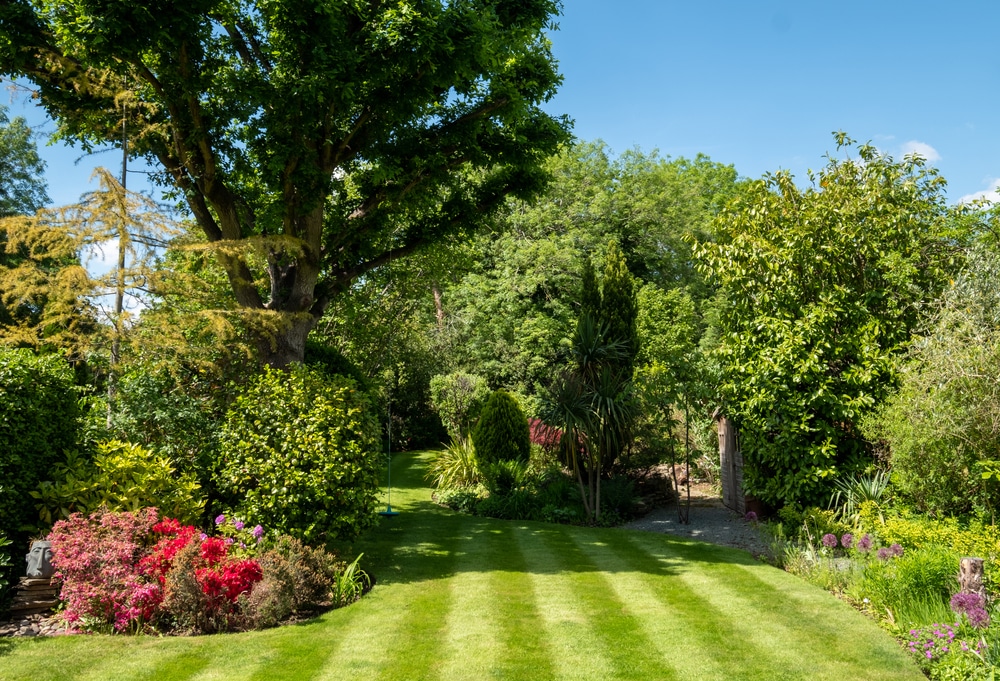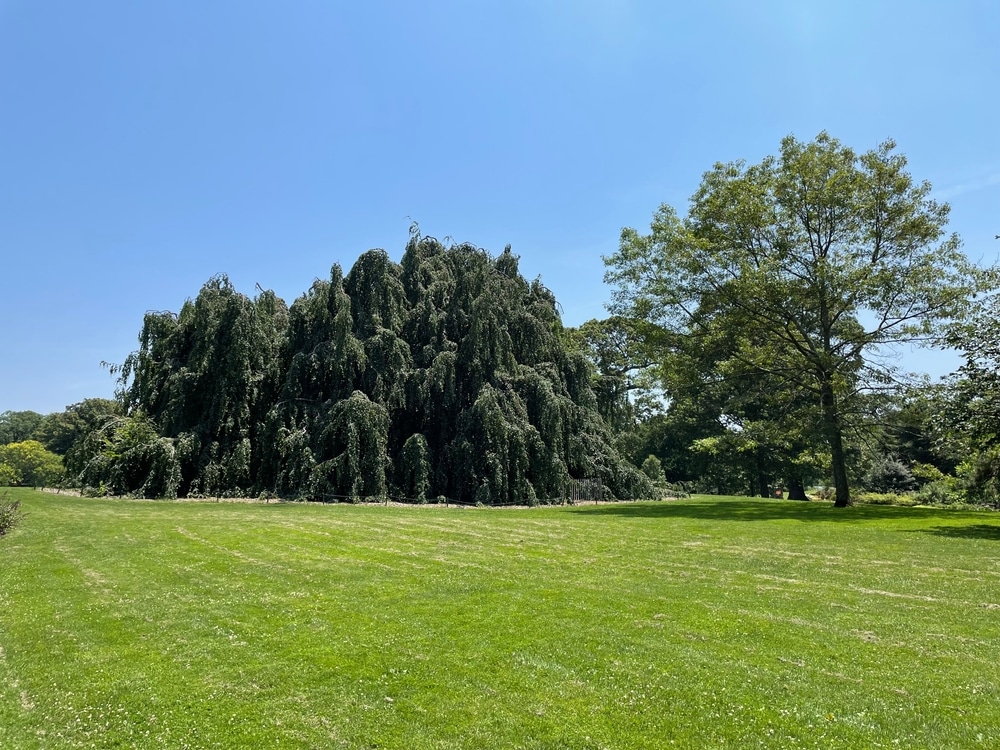Golf Course Grass Seeds: What’s Behind the Greens?
Selecting the right grass seeds for a golf course is crucial for playability and aesthetic appeal. Various grass types can be used, each with unique care requirements and resistance to environmental factors.
Types of Grass Used
- Cool-season grasses: These thrive in areas with cold winters and hot summers. Examples include:
- Fescue: Known for its fine texture and suitability for roughs and shady areas, as found on golf courses like Pebble Beach.
- Kentucky bluegrass: Offers lush, dense turf and is often mixed with other varieties such as bentgrass, used in courses like Winged Foot.
- Bentgrass: Preferred for its fine texture and ability to thrive in cooler climates, a top choice for putting greens.
- Poa annua: Adapts well to a range of climates and is a common choice for greens.
- Warm-season grasses: Best suited for regions with mild winters and hot summers. Notable types include:
- Bermuda grass: Popular in the southern US due to its tolerance to heat, drought resistance, and ability to withstand heavy traffic.
Factors Influencing Grass Selection
- Climate: A primary factor determining which grasses can survive and prosper in a region.
- Cool-season grasses are suited for northern areas with distinct seasons.
- Warm-season grasses flourish in southern and coastal regions.
- Soil Type: Soil composition affects drainage, nutrient availability, and overall turf health. A balanced mix of nutrients and organic matter is essential for optimal growth.
- Maintenance Requirements: Some grasses need more frequent watering, mowing, or fertilization, impacting resource allocation and upkeep costs.
- Golf Course Layout: Different grasses can be selected for various areas such as fairways, greens, and roughs, depending on sunlight exposure and traffic patterns.
Cultivation and Maintenance
To ensure your golf course grass thrives, paying attention to soil preparation, seeding methods, and ongoing grass care is crucial. These steps are integral to cultivating the kind of turf that can withstand frequent play and changing weather conditions.
Soil Preparation
- Test Soil: Start by testing the soil’s pH and nutrient levels; this will guide you in amending the soil to provide the best possible environment for grass seeds.
- Amend Soil: Depending on the results, you may need to add lime to raise the pH or sulfur to lower it. A good soil mix is critical for optimal grass growth, incorporating the right balance of nutrients and organic matter.
Seeding Methods
- Select the Right Grass Seed: Identify grass species suitable for your climate and golf course design; fescue grass, for example, is often used for golf course roughs.
- Seeding Time: Time your seeding strategically—ideally during the season that best supports the germination of your chosen grass type, which can be either spring or fall for cool-season grasses.
Grass Growth and Care
- Mowing: Maintain grass at the recommended height, which can vary between species—Bermuda grass performs well at heights between 0.375 to 0.500 inches. (Optimal mowing heights)
- Watering and Fertilizing: Implement regular watering schedules and apply fertilizers as needed to promote healthy growth and disease resistance.
- Pest and Weed Control: Stay vigilant with pest and weed management practices to ensure your turf remains in pristine playing condition.
How to Keep that Grass Looking Top Notch
To maintain the pristine condition of golf courses, grass health and sustainability are paramount. Focusing on disease prevention and effective water management ensures resilience and vitality in your turfgrass.
Disease Prevention
- Identify Early: Recognize signs of turf disease quickly to prevent widespread damage. Symptoms often include discoloration, spots, or unusual patterns on grass blades.
- Cultural Practices: Employ practices like regular aeration, proper mowing, and choosing disease-resistant grass varieties to fortify against illnesses.
Irrigation and Water Management
- Efficiency is Key: Implement irrigation systems that conserve water and reach roots effectively, avoiding surface evaporation and waste.
- Monitoring Tools: Use soil moisture sensors to measure water needs accurately and apply proper pH level management to optimize the health and sustainability of your golf course grass.
Technological Advancements
In the world of golf, the greens you play on are more sophisticated than ever, thanks to cutting-edge technologies in seed engineering and turf maintenance. Let’s take a closer look at how these advancements are changing the game.
Innovations in Seed Engineering
Golf courses demand grass varieties that are not only aesthetically pleasing but also resilient and easy to maintain. Recent technological strides have led to:
- Enhanced drought resistance: New grass seed varieties better tolerate water scarcity.
- Improved disease tolerance: Grasses now have built-in defenses against common pathogens.
- Heat stress adaptability: Through genetic tweaks, certain seeds manage heat better.
- Color retention: Players enjoy verdant courses longer due to colorfast genetic traits.
For instance, scientists are focused on creating more resilient turf grass for golf courses that can withstand extreme weather conditions and require less upkeep.
Smart Maintenance Techniques
Smart maintenance leverages technology to keep golf courses in pristine condition while optimizing resource use. Key techniques include:
- Precision irrigation: Tools help apply the exact amount of water needed, conserving this vital resource.
- Autonomous mowers: These cutting-edge machines trim turf without human guidance.
- Firmness meters: Devices measure the firmness of greens, ensuring consistency and optimal play conditions. This technology gives you insight into the subtle nuances of the green’s response to play, replacing the previously subjective assessment methods.
Moreover, advances in technologies aid turf managers in delivering these maintenance techniques with unprecedented precision, ensuring that the playing fields meet professional standards and sustainability goals.
Economic Considerations
Selecting the right grass seed for your golf course is not only a botanical consideration but also a financial one. Here’s a breakdown of how your choices impact your pocketbook.
Cost Analysis
- Initial Outlay: The upfront cost for grass seed varies significantly depending on the type of grass you select. For example, Bentgrass is a cool-season grass that can have a higher initial cost due to specialized care needs.
- Maintenance Expenses: Some grasses, like the drought-resistant Bermuda grass, may save you money over time as they require less water and fewer chemical treatments.
- Climate Compatibility: Your local climate has a direct impact on costs, as choosing a grass that isn’t well-suited to your region can lead to higher water bills and more frequent replanting.
Return on Investment
- Increased Playability: Investing in a high-quality turf like Zoysia can enhance playability, which can attract more golfers and potentially increase revenue.
- Long-Term Savings: Selecting a low-maintenance grass variety can lead to substantial long-term savings in water, fertilizer, and labor costs.
- Research Benefits: Taking into account the value of turfgrass research can help you choose a grass type that will deliver long-lasting durability and aesthetics, ensuring your investment pays off for years to come.
Frequently Asked Questions
These questions delve into the meticulous care and expertise required to maintain the picturesque greens of a golf course.
How do golf courses maintain their grass color throughout the year?
Golf courses employ a combination of irrigation, fertilization, and grass blends suitable for specific climates to ensure a vibrant color all year round. Cool-season grasses thrive in northern climates, while warm-season varieties are ideal for southern locations.
Which type of grass seed is most commonly used on golf greens?
The most prevalent type of grass seed used on golf greens is Bentgrass due to its fine texture and ability to withstand close mowing, resulting in smooth putting surfaces.
What is the purpose of the dark granular material observed on golf greens?
This granular material is known as topdressing, typically composed of sand or a sand-soil mix, aiding in smoothing the surface, managing thatch, and improving soil aeration.
What methods are employed by golf courses to control weed growth?
Golf courses typically use an integrated approach to control weeds, which includes:
- Pre-emergent herbicides to prevent weed germination
- Post-emergent herbicides for visible weed treatment
- Cultural practices such as proper mowing and fertilization to discourage weed establishment
How frequently should grass be seeded on golf courses to maintain optimal conditions?
Seeding frequency on golf courses varies, but it is generally recommended to overseed annually or biannually to ensure the turf remains dense and resilient against wear and environmental stresses.
What are the ideal conditions for growing and maintaining the grass on golf greens?
The ideal conditions include:
- Well-draining soil with the correct pH balance
- Sufficient sunlight exposure
- Consistent mowing at the recommended height for the specific grass type
- Regular watering while avoiding over-irrigation
- Tailored fertilization based on soil tests to meet the grass’s nutrient needs
Last update on 2025-04-25 / Affiliate links / Images from Amazon Product Advertising API





